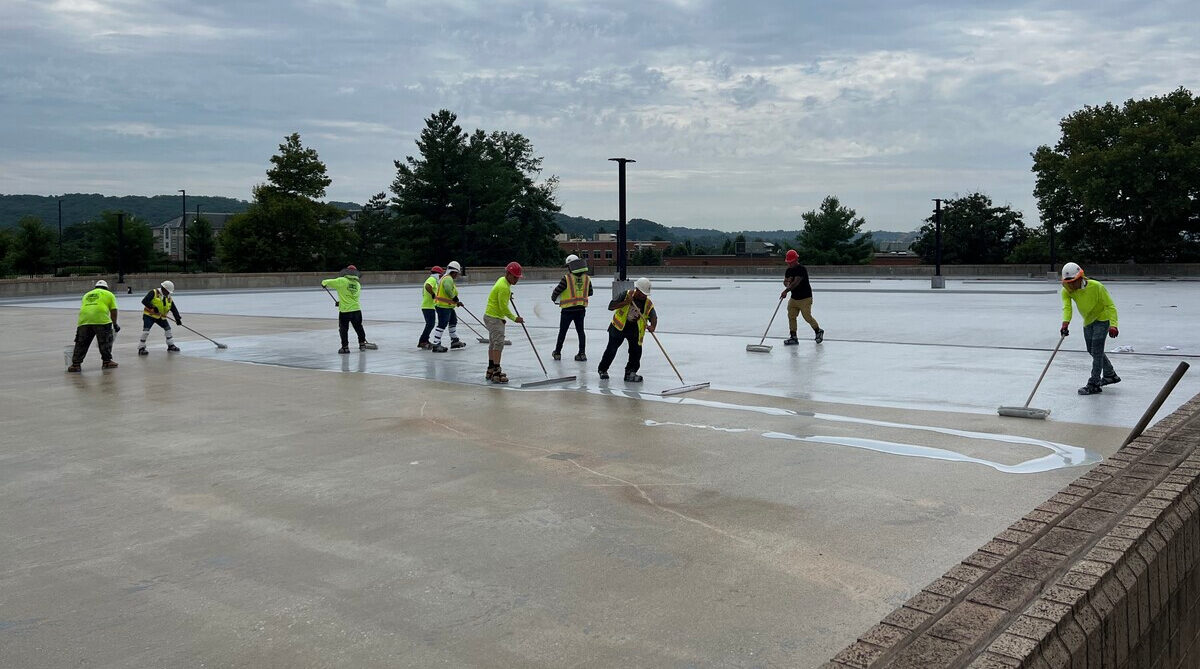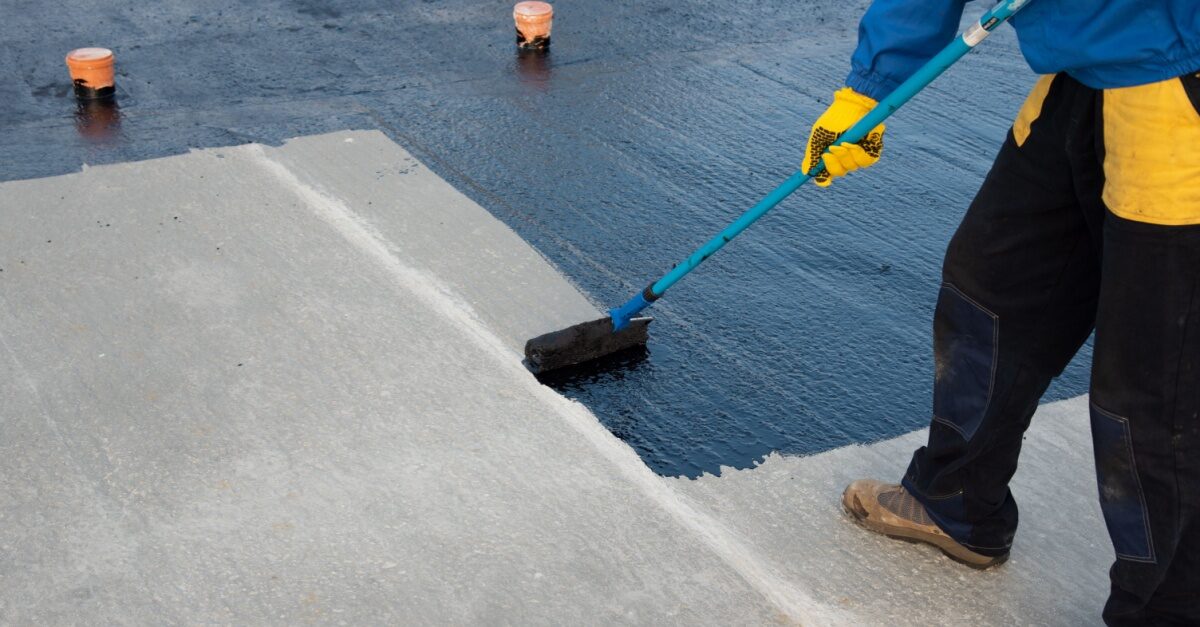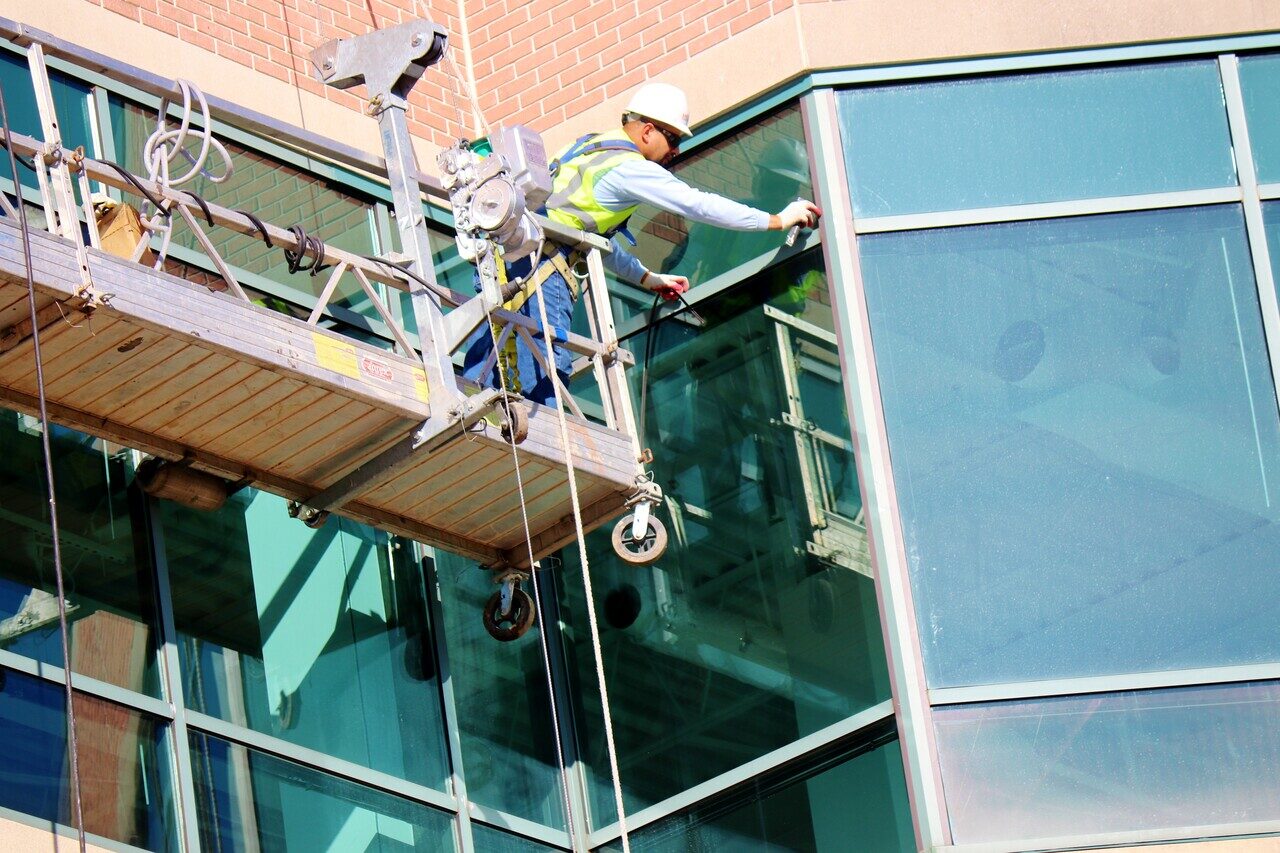
Top Ten Signs Your Building Requires Waterproofing and Restoration
Some areas of Northern Florida recently experienced over two feet of rainfall in less than a week, causing devastating damage and flooding. If your building has ever faced a water intrusion problem, you know it’s a critical concern that must be repaired immediately. Rapidly identifying and addressing water-related issues while consistently performing proactive measures will reduce repair and restoration expenses while minimizing operational disruptions. This article identifies the top ten signs your building needs waterproofing or restoration services, how to address them, and how to prevent them.
1. Visible cracks in the Façade and Foundation
Cracks in a building’s façade or foundation are often the first signs of underlying structural issues. They can vary in size from hairline fissures to more significant gaps.
- Where to look for cracks in the façade and foundation? Inspect the exterior walls, around windows and doors, and the foundation. Pay particular attention to areas where different materials meet, as these are common weak points.
- How do you address cracks in the façade and foundation? Small, superficial cracks can often be repaired with sealant or patching compounds. Larger or deeper cracks may require professional evaluation and repair, potentially involving structural reinforcement.
- How can cracks in the façade and foundation be prevented? Ensure proper drainage around the foundation to prevent water accumulation, which can cause the ground to shift and create cracks. Additionally, waterproofing the building envelope and addressing minor issues promptly can prevent them from becoming significant problems.
Read more about why concrete cracks and spalls.
2. Water Stains on Walls and Ceilings
Discoloration on walls and ceilings is a telltale sign of water infiltration. A darker dry stain signifies a slow but long-standing leak. Stains damp to the touch tell you the intrusion is active and could intensify.
- Where to look for water stains? Roofs and ceilings are the first place to look, as they are the leading cause of commercial water damage. Regularly inspect windows, façades, basements, and around equipment prone to leaks or corrosion, such as HVAC, boilers, and other equipment.
- How do you address water stains on walls and ceilings? Identifying and stopping the leak is the top priority when you spot water stains. Once complete, you can address any cosmetic needs, mold remediation, or structural repairs.
- How can water stains on walls and ceilings be prevented? Identify the most vulnerable areas for water intrusion and introduce proactive measures. For areas prone to heavy rain, waterproofing the roof and timely replacement of sealants are effective preventative measures.
Read more about testing for, preventing, and repairing water intrusion.
3. Peeling or Blistering Paint
Introducing moisture will cause paint to blister, bubble, and eventually peel away. Wallpaper, although less common now, will also peel away when moisture breaks down its adhesive.
- Where to look for peeling and blistering? Corners and ceilings are the most common places. Understanding your building’s makeup and history can also help identify vulnerable areas and speed up repair efforts.
- How do you address peeling and blistering? After successfully stopping the water intrusion, it’s time for restoration. The level of repair depends on the severity of the water damage. The goal should be to return the impacted area to like-new conditions.
- How can peeling and blistering be prevented? It comes down to taking preventative measures against water intrusion. Maximizing exterior maintenance can minimize repair costs.
Read more information about minimizing repair costs through exterior maintenance.
4. Efflorescence
Efflorescence is a powdery substance found on masonry walls. According to the Masonry Institute, efflorescence can only appear when salt is present in the wall, sufficient moisture is present, and a path for the salts to travel to the surface is available.
- Where will you find efflorescence? When the salts reach the exterior and moisture is released, crystals appear on the masonry’s exterior. Although the crystals are typically white, they can also be brown, green, or yellow.
- How do you address efflorescence? Since efflorescence requires all three factors (salt, moisture, and a path), you have to remove one from the scenario. In this case, we stop the water intrusion and remove the efflorescence through pressure washing.
- How can efflorescence be prevented? Applying water repellent protects your building’s masonry from water intrusion and helps reduce the effects of efflorescence.
Read more about maintaining your building with pressure washing.
5. Mold and Mildew Growth
Mold and mildew growth pose health risks and indicate underlying water problems. Regular inspections can help detect and address mold issues early, ensuring a safe and healthy environment.
- Where to look for mold and mildew? Mold and mildew need moisture to appear. Therefore, anywhere moisture is present, such as basements, is a potential concern for mold and mildew growth.
- How do you address mold and mildew? The scope of the damage dictates the remediation plan. First, like in most cases, you need to stop the moisture or the mold and mildew will return. Because mold presents health risks, you need to consider Personal Protective Equipment (PPE) and the safety of building occupants.
- How can mold and mildew be prevented? Your best line of defense is to keep moisture and water out of the equation. Frequently inspecting areas where mold and mildew grow, using moisture detectors, and waterproofing your exterior will help reduce the likelihood of mold and mildew growth.
Read more about proactive waterproofing strategies.
6. Spalling Concrete
Spalling, the flaking or chipping of concrete or masonry, affects a building’s aesthetics and, when left untreated, can compromise its structural stability.
- Where to look for spalling concrete? Structures like parking garages and stadiums, where concrete stands unprotected against the elements, are prime spots to find spalling concrete. This issue is especially true for states with frequent freezing and thawing cycles.
- How do you address spalling concrete? You’ll need to remove and replace the damaged concrete, but first, you have to figure out the root cause of the spalling. Next, you need to factor in the severity of the damage. Spalling is a sign of an underlying issue within the concrete that can signal rust and corrosion of rebar, thus weakening your structure.
- How can you protect concrete from spalling? If the cause is environmental, you can apply sealers and waterproofing membranes to slow the spalling down; if not, stop it altogether.
Read more about how to approach minor exterior building repairs.
7. Rust and Corrosion
When you see rust, it’s a sign that water has breached the façade, contacting metal and causing it to corrode. Rust weakens the bond between the concrete and the rebar, triggering additional concrete and structural damage.
- Where should you look for rust and corrosion? You may spot rusting streaking down brick lintels or cracked or spalling concrete. If you spot spalling, there’s a good chance the rebar reinforcing the concrete is corroding as well.
- How do you address rust and corrosion? Signs of rust could require extensive restoration, structural reinforcement, or maybe just minor concrete repair or sealant replacement.
- How can rust and corrosion be prevented? Applying coatings or using corrosion inhibitors to rebar are both effective treatments in slowing the effects of corrosion. However, a more practical approach is keeping water out by applying waterproofing membranes and sealant to all high-risk areas.
For more information on façade safety repairs.
8. Pooling Water
This one seems obvious, but sometimes, people address the symptoms rather than the problem. Maybe you have a leaking skylight that only creates a pool when it rains, so we place a bucket underneath and mop it up until next time. As we’ve learned, water finds its way, so it begins to permeate behind walls and cause problems that someone cannot remove by mopping away.
- Where to look for pooling water? Under sprinkler heads, skylights, and around equipment such as boilers and water heaters.
- How do you address pooling water? A mop is only part of the equation. You can often remedy skylight leaks by reapplying sealant. Other leaks may require rapid leak investigation to identify the point of origin.
- How can pooling water be prevented? Develop a proactive plan that involves routine inspections, replacing and reapplying sealants, and waterproofing membranes according to the manufacturer’s recommendations.
Read more about rapid commercial leak repair.
9. Failed Joint Sealants
If not addressed promptly, failed joint sealants can lead to significant water intrusion and structural damage. Sealants are critical for preventing water from seeping through gaps and joints in the building envelope.
- Where to look for failed joint sealants? Inspect areas where different building materials meet, such as around windows, doors, expansion joints, and between panels. Look for signs of deterioration, like cracking, punctures, shrinking, hardening, discoloration, or separation from the substrate.
- How do you address failed joint sealants? Remove the old, deteriorated sealant before applying a new, high-quality sealant. Clean and dry the surfaces thoroughly to ensure a proper bond. Consulting a professional may be necessary to select the appropriate sealant for your building’s specific needs.
- How can joint sealants be prevented from failing? Regularly inspect and maintain joint sealants as part of your building’s maintenance plan. Use high-quality, UV-resistant sealants and follow manufacturer guidelines for application and curing. Proactively replace aging sealants to prevent water intrusion and extend the life of your building’s envelope.
Read more about selecting and applying joint sealants.
10. Humidity, Condensation, and Musty Odors
When water invades, it’s not just your eyes that detect the signs. If you encounter musty odors or notice higher humidity levels in your building that don’t align with the weather or internal climate, there’s a good chance you have a water intrusion problem. These subtle indicators often point to hidden leaks or moisture accumulation, signaling the need for immediate investigation and repair.
- Where will you find humidity, condensation, and musty odors? You’ll often see these signs in basements and areas that lack poor ventilation.
- How do you address humidity, condensation, and musty odors? These signs indicate insufficient waterproofing and can lead to mold growth and poor air quality. Conduct an immediate inspection to rectify the source of these conditions.
- How can you prevent high humidity, condensation, and musty odors in commercial buildings? Your best bet is to create an environment where the air flows and the water doesn’t. Keeping the water out for basements may require below-grade waterproofing or soil grouting.
Read more about preventing below-grade water infiltration.
You Know the Signs, Now You Know Who to Call
Recognizing and addressing the signs of water infiltration and structural issues is crucial for maintaining your building’s integrity and value. We encourage you to take our Building Façade Assessment Tool, which will help you identify the signs explained in this article.
Regular inspections and proactive maintenance can save significant repair costs and prevent operational disruptions. Partnering with experts ensures rapid identification of these issues and quick resolution.
For comprehensive waterproofing and restoration services, trust A1’s expertise. Contact us today to protect your investment.



